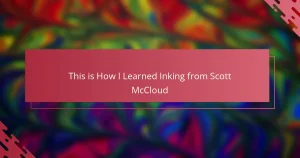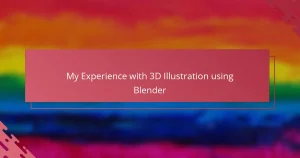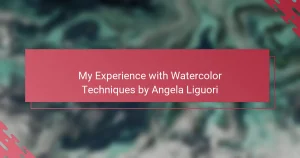Key takeaways
- Understanding vintage aesthetics involves capturing nostalgia through warmth, detail, and emotional connections, rather than merely replicating old styles.
- Blending vintage elements with digital techniques enhances artwork by combining tactile authenticity and modern precision, allowing for creative exploration.
- Building a cohesive vintage portfolio requires consistent color palettes and embracing imperfections, which add authenticity and character.
- Effectively showcasing vintage style involves thoughtful presentation and context, deepening emotional connections with viewers through curated details.
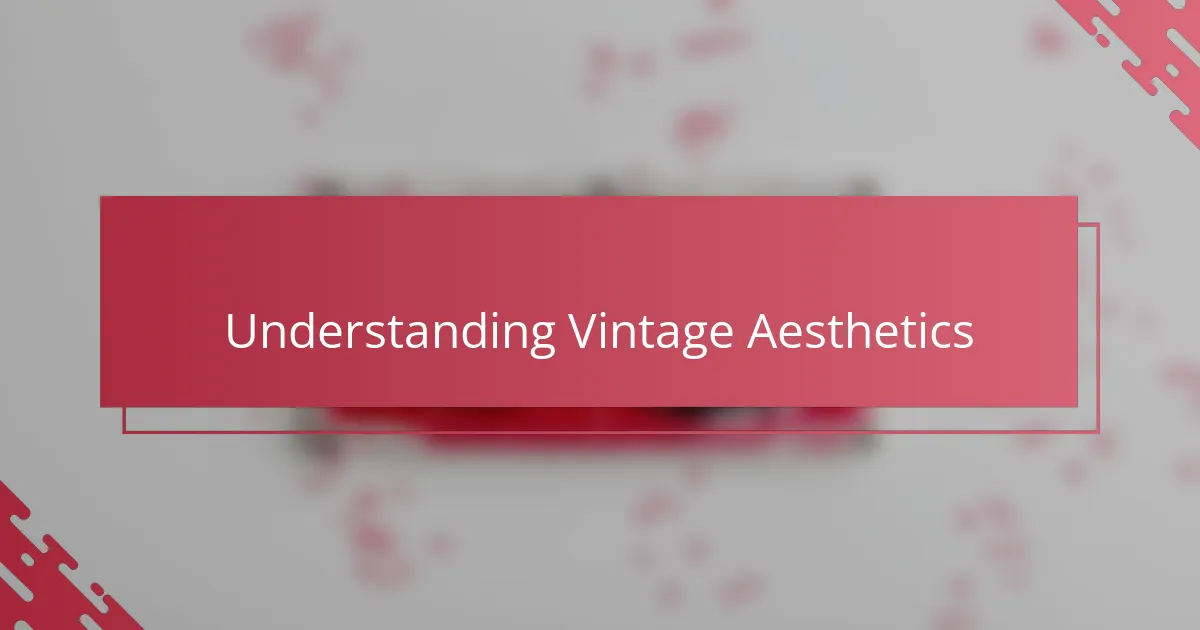
Understanding Vintage Aesthetics
Vintage aesthetics have always fascinated me because they carry a sense of nostalgia that modern designs often miss. It’s not just about old-fashioned visuals; it’s about capturing a mood and a story from another time, something that feels both familiar and timeless. I often find myself asking, what makes a piece truly vintage rather than just retro?
When I look closely, vintage style reveals a blend of muted colors, intricate details, and purposeful imperfections—a world where design wasn’t rushed but deliberate. This attention to detail speaks volumes about the era’s values and craftsmanship, which I strive to channel in my work. Have you ever noticed how these elements create an emotional connection that purely digital designs sometimes lack?
To me, understanding vintage aesthetics means embracing its warmth and honesty, even in a digital medium. It’s not simply about copying old styles but interpreting them with respect and creativity, keeping the soul of vintage alive. This approach changes how I see illustration—not just as art, but as a bridge between past and present.
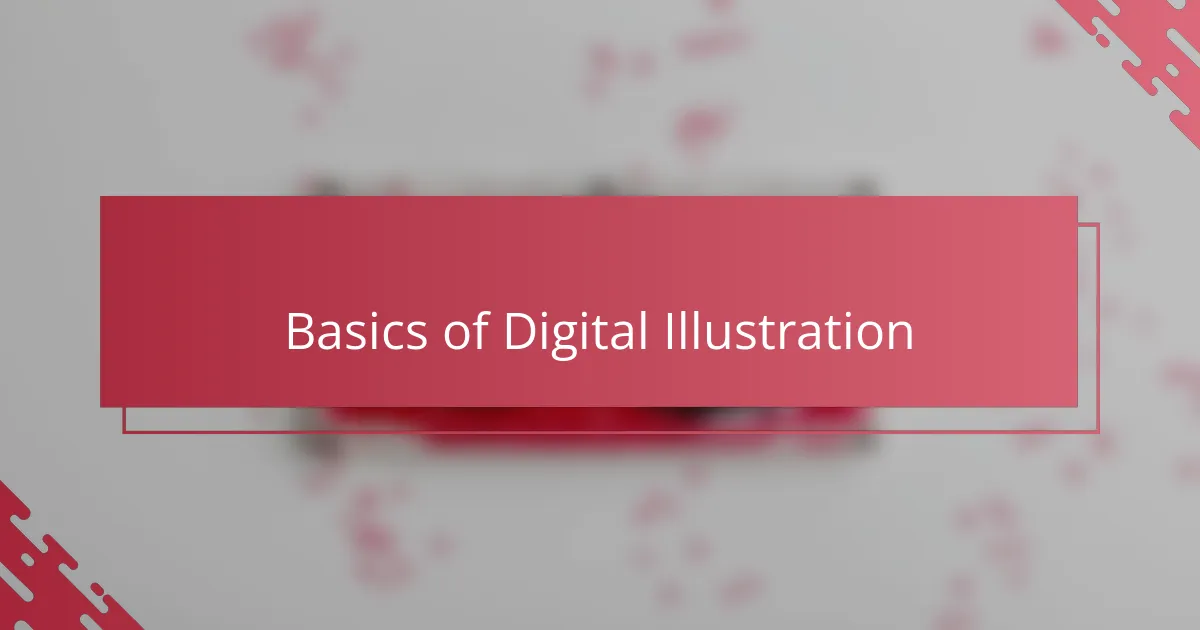
Basics of Digital Illustration
Digital illustration, at its core, is about blending creativity with technology. When I first started, I was amazed by how a simple tablet and software could mimic traditional tools like brushes and pencils. Have you ever felt that rush when a digital brushstroke flows just right, almost like magic?
One of the basics I learned early on was mastering layers. It’s such a game-changer—layers let me experiment without fear. If something doesn’t work, I just hide or delete a layer instead of starting over, which gave me the freedom to explore vintage textures and colors in new ways.
Working digitally also means embracing precision and patience. Unlike physical media, you can zoom in to perfect every tiny detail, which I found essential when recreating the deliberate imperfections vintage styles demand. Isn’t it fascinating how technology can help us honor traditional craftsmanship rather than replace it?
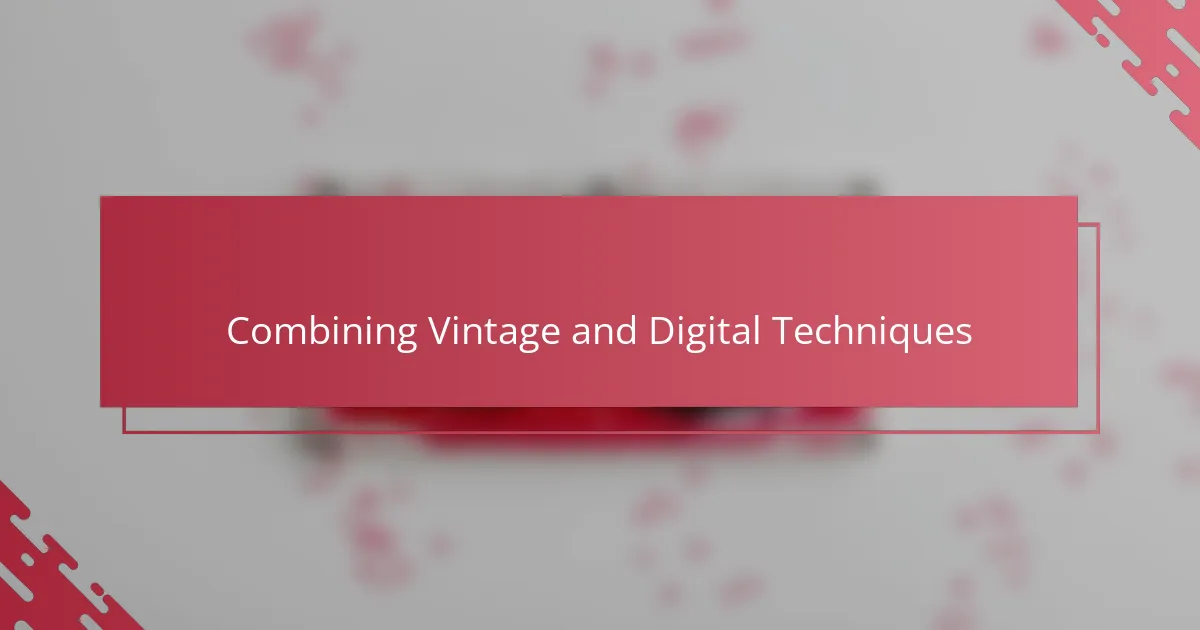
Combining Vintage and Digital Techniques
Blending vintage and digital techniques has been a rewarding challenge for me. I remember the first time I tried layering textured brushes over crisp vector shapes—it felt like breathing life into a flat image, adding the warmth and imperfection vintage art thrives on. Have you ever experienced that moment when technology doesn’t overshadow tradition but actually enhances it?
I often experiment by scanning old paper textures or hand-drawn sketches and integrating them digitally. This fusion lets me maintain the tactile feel of vintage materials while enjoying the flexibility and precision digital tools offer. It’s a delicate balance, but when it clicks, the result is something both nostalgic and fresh.
What excites me most is how digital methods allow me to tweak and refine those vintage elements without losing their soul. For instance, I can adjust a worn-out texture’s opacity or color saturation to match the mood I’m aiming for—something that would be tedious or impossible by hand. Isn’t it amazing how these two worlds—old and new—can coexist in a single illustration?
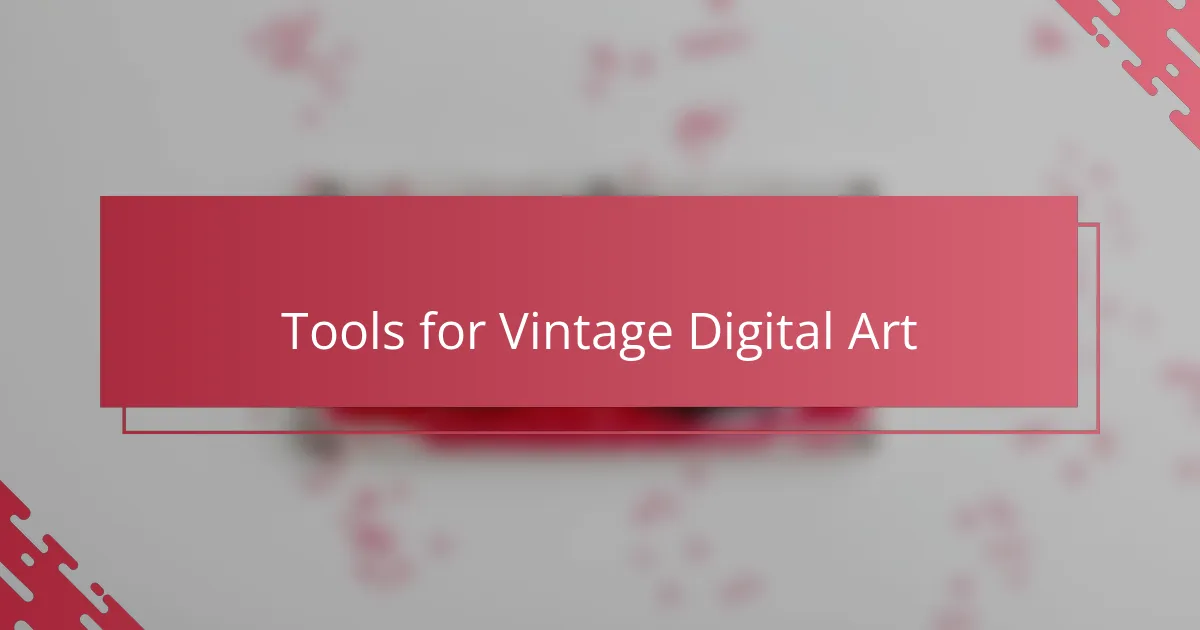
Tools for Vintage Digital Art
When it comes to tools for vintage digital art, I’ve found that choosing the right software is just the beginning. Programs like Adobe Photoshop and Procreate offer a rich variety of brushes that mimic traditional media—think chalk, watercolor, and ink—which are essential for recreating that authentic vintage texture. Have you ever experimented with custom brushes that simulate paper grain or brush bristles? Those subtle details can transform a flat illustration into something that feels lived-in and warm.
Beyond software, I often rely on a good graphics tablet paired with a pressure-sensitive stylus. For me, the tactile feedback is crucial; it bridges the gap between mechanical precision and the natural irregularities vintage styles demand. Using these tools, I can control stroke weight and opacity intuitively, making digital strokes feel organic rather than synthetic. Doesn’t that natural flow make working on digital vintage pieces feel more personal and less mechanical?
I’ve also incorporated physical elements by scanning vintage ephemera—like old postcards or fabric patterns—and then layering them digitally. This hybrid approach allows me to blend tactile authenticity with digital flexibility. The ability to adjust opacity, color balance, or blend modes in editing software helps maintain that delicate balance between preserving vintage charm and enhancing the artwork with modern technology. Have you tried fusing physical textures with digital layers? It’s surprisingly satisfying to see those worlds merge seamlessly on screen.
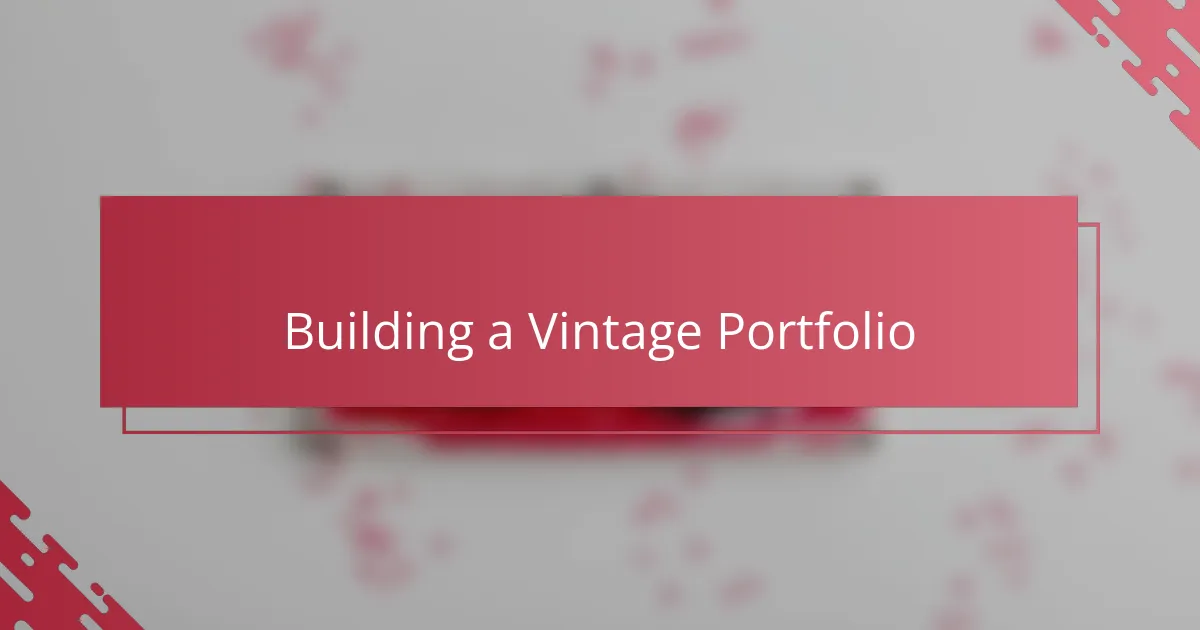
Building a Vintage Portfolio
Building a vintage portfolio isn’t just about collecting visually appealing pieces; it’s about curating a cohesive story that reflects the era’s essence. Early on, I realized that selecting a consistent color palette—those muted, earthy tones—helped unify my work and immediately set the vintage mood. Have you ever noticed how a well-chosen palette can instantly transport you to another decade without showing a single date?
I also learned that embracing imperfections—like subtle grain, uneven lines, or faded textures—adds authenticity to a vintage portfolio. At first, it felt counterintuitive to intentionally include “flaws,” but those details became my secret weapon in capturing vintage’s character. When you allow those imperfections to shine, doesn’t your work feel more alive and genuine?
Finally, building a vintage portfolio meant balancing variety with focus. I experimented with different subjects—posters, packaging, typography—but kept them tied together by stylistic choices and techniques. This approach gave me flexibility while ensuring my portfolio told a clear, vintage-inspired story. How do you find that sweet spot between exploring styles and maintaining a recognizable voice? For me, it’s all about thoughtful consistency.
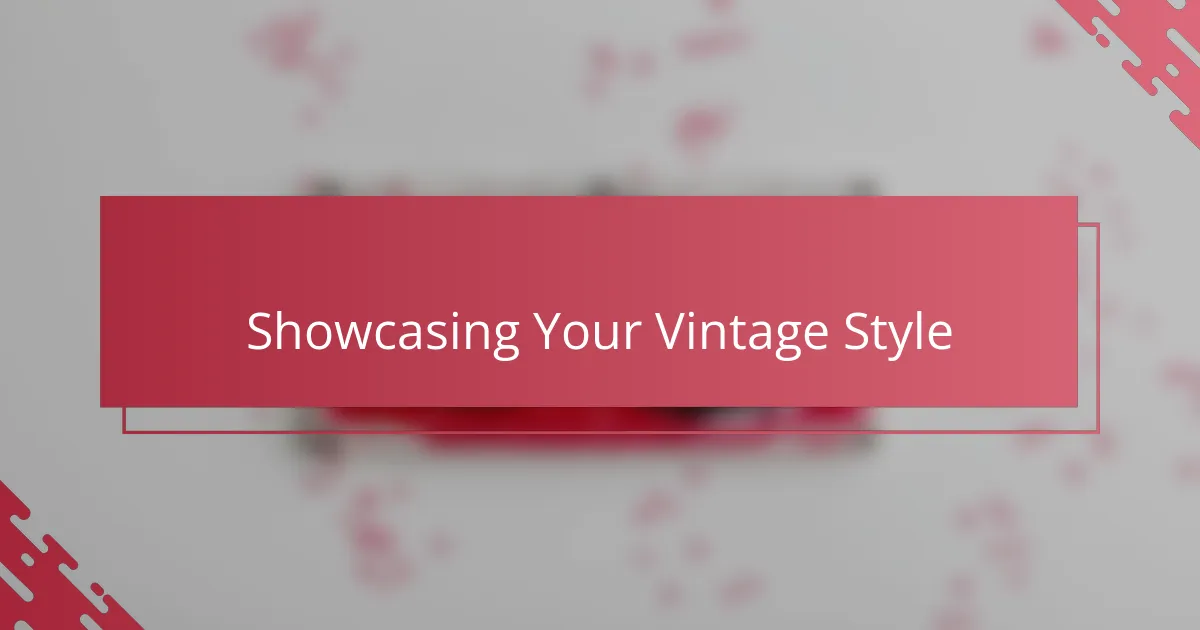
Showcasing Your Vintage Style
Showcasing your vintage style is more than just displaying artwork; it’s about inviting others into the mood and story you’ve carefully crafted. I remember the nervous excitement the first time I shared a piece that combined worn textures with soft, muted colors—it wasn’t just about aesthetics, but how those details sparked recognition and nostalgia in viewers. Have you ever noticed how a subtle grain or an imperfect brushstroke can say more than words ever could?
I’ve found that context plays a huge role in showcasing vintage art effectively. Whether it’s a portfolio website, a printed booklet, or social media, how the work is presented can amplify its vintage feel. For instance, pairing your illustrations with typefaces and layouts inspired by the era feels like adding the perfect soundtrack to a classic film—it just completes the experience. Don’t you think that surroundings shape how we perceive the artwork’s authenticity?
What truly excites me is seeing people connect with vintage style when it’s shown thoughtfully. It’s like sharing a secret handshake across time, a shared appreciation for beauty that endures beyond trends. So, when you present your vintage work, consider how every detail—from framing choices to accompanying descriptions—can deepen that emotional connection and celebrate the timeless charm you’ve revived. How do you make your vintage style not only seen but felt?
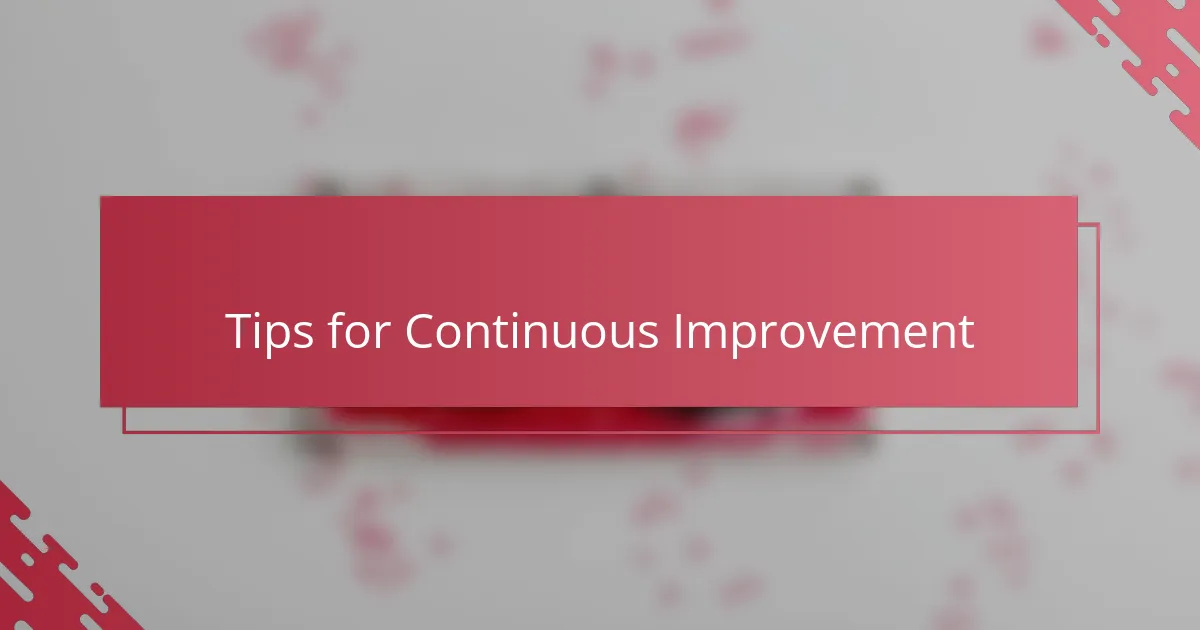
Tips for Continuous Improvement
Continuous improvement in digital illustration, especially when capturing vintage aesthetics, often comes down to staying curious. I push myself to try new brushes, textures, or color tweaks regularly because each small experiment teaches me something fresh about how nuance shapes a mood. Have you ever noticed how just adjusting a single brush opacity can completely transform the feel of an image?
I also remind myself to seek feedback, even if it means sharing unfinished work. Early on, I hesitated, worried about criticism, but honestly, honest opinions have been invaluable in fine-tuning my approach. Sometimes, a fresh pair of eyes points out details I’d missed or inspires a new direction I wouldn’t have discovered alone.
Finally, patience is key. I’ve learned that progress doesn’t happen overnight, especially with vintage styles that demand deliberate imperfections and subtlety. Rather than rushing, I embrace each iteration as a chance to deepen my understanding and skill—because what feels “right” vintage-wise often reveals itself gradually through practice. Isn’t that part of the joy of illustration—growing alongside each piece you create?
